PROTECT YOUR DNA WITH QUANTUM TECHNOLOGY
Orgo-Life the new way to the future Advertising by AdpathwayOrnamental grasses earn their spot in the landscape with multi-seasonal appeal through form, color, and showy plumes and seedheads. They also offer ecosystem services like erosion control and waterwise solutions. Durable and resilient, many grow across various climates and soil types.
The selection of ornamental grasses is broad and includes many North American natives and their top-performing cultivars. Low-maintenance, they need few extra resources to thrive and little tending. Cutting back old leaves is the primary part of promoting lush, full-bladed tufts and fountains. Knowing when and how to cut back ornamental grass is key to a robust specimen.
To enjoy their textural interest well into winter, resist the temptation to cut back ornamental grass in fall. Intact blades insulate the crown in cold conditions. The dense foliage shelters birds, mammals, amphibians, and beneficial insects as they overwinter.
Wait until late winter or early spring to cut back perennial grasses, making way for new growth to emerge as temperatures warm. Full disclosure: they don’t all stand up well to ice, wind, and snow, but many shine in the quiet season.
Why Cut Back Ornamental Grasses?
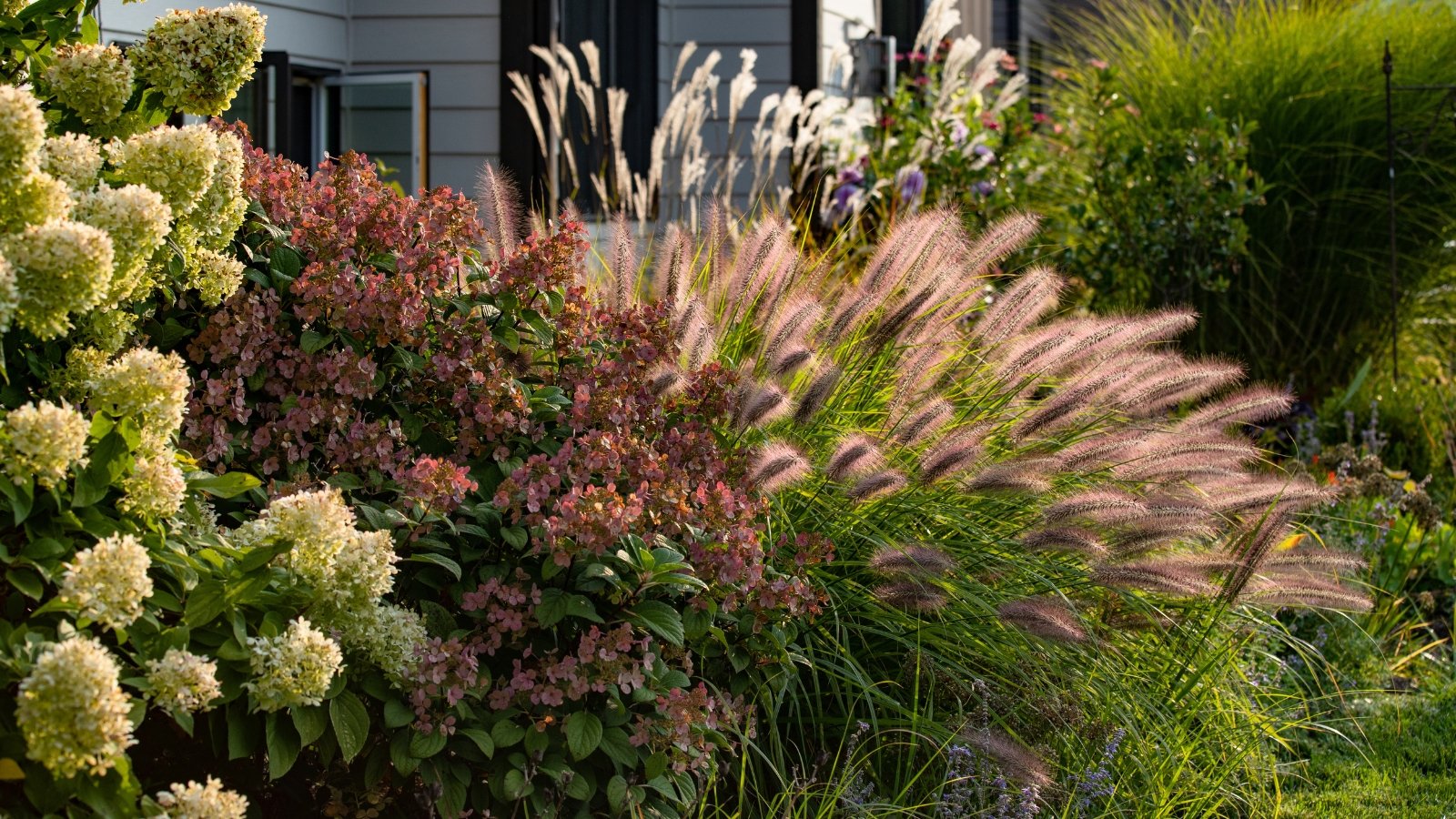 Trimming promotes better air circulation and prevents crown rot.
Trimming promotes better air circulation and prevents crown rot. Grasses are tough perennials that grow just fine if we don’t cut them back, although eliminating debris and dried blades that build up provides space for fresh leafy growth and a lush look. Over time, removing the accumulation prevents dieback and rot in the crown.
Pruning ornamental grasses also fosters faster regrowth in spring. Old leaves that insulate the crown delay warming and new shoots from emerging by a few weeks.
When to Cut Back Ornamental Grasses
 Leaving dried grasses in winter adds some textural interest in the garden.
Leaving dried grasses in winter adds some textural interest in the garden. For most ornamental grasses, we don’t want to be hasty in cutting them back at season’s end. Leave them standing in dormancy, waiting until late winter and early spring to cut them back. The dried blades insulate the growth tips at the soil level for winter protection.
Many grasses look outstanding in frosty conditions and add interest to the quiet winter landscape with their sway and rustle. Dried seedheads provide cool-season forage for birds and small mammals, and the tawny blades offer shelter for overwintering.
The goal for pruning grasses is to cut them before new growth emerges in spring, eliminating mixed clumps of brown and green foliage and freeing up crown space for fresh blades.
Cool and Warm Season Types
 Timing depends on the type of grass you’re working with.
Timing depends on the type of grass you’re working with. There are cool-season and warm-season grasses that do their active growing based on corresponding seasonal temperatures. Warm-season grasses emerge in mid-to-late spring and thrive in the summer.
Cool-season types do most of their growing in spring with temperatures under 75°F (24°C) and again in fall as conditions moderate. Both types show interest at other times of year, and both take pruning during dormancy before new blades emerge. February to April are prime for cutting back, depending on the climate.
For warm-season grasses, this means we can cut them back as early as fall. After a few frosts, they dry and turn brown. If fire is a concern in your area, or a tidy look is your preference heading into winter, prune them in autumn (though you’ll forego the winter interest and habitat offerings). Otherwise, wait until early to mid-spring for cut back.
Cool-season grasses do well with an early spring cut, catching them before new shoots emerge.
How to Cut Back
 Clean your tools before you start to avoid spreading disease.
Clean your tools before you start to avoid spreading disease. Warm-season grasses (those dormant after a few fall frosts) take hard cut back well. These can be cut nearly to the ground with good recovery. Cool-season grasses do better when cut high. Leave one-third of the base standing with a clean cut.
Healthy evergreen grasses, which sometimes aren’t true grasses, like sedge and carex, can remain standing. Comb out the dead blades to increase air circulation and clean up the look. A leaf rake or running gloves through the blades does the job.
Bundle and tie large bunches for ease of cutting at the base and carrying away. Pruners, shears, and hedge trimmers work well on the tough perennials. Gloves and sharp tools make the task easier.
Ornamental grasses benefit from division when the crown shows decline and outer, perimeter growth is more vigorous. Warm-season grasses are best divided in spring, while cool-season types do well with a fall division. Their corresponding active growing seasons encourage root and leafy growth before temperature extremes.
Switchgrass ‘Northwind’
 Cut back this ornamental grass in late winter.
Cut back this ornamental grass in late winter. Switchgrass is a popular North American native prairie grass that shines in the home garden. It grows across a range of soil types, moisture levels, and exposures. The ornamental blades form an upright vase with high vertical interest, and showy summertime plumes develop seedheads that persist into winter.
Switchgrass is rugged, preferring lean soils to overly rich ones. It grows in wet and dry soils and tolerates occasional flooding.
‘Northwind’ is a favorite variety with structural, tall blades that form a strict upright column. Vigorous, blue-green blades yield to green and maroon plumes that rise above them in summer. In the fall, the foliage turns gold before drying to tan.
Switchgrass cultivars are rugged with extensive roots that make them heat and drought-tolerant. They’re useful in erosion control and revegetation sites, and as border and foundation specimens, in rain gardens, and naturalized arrangements.
Wait until late winter or early spring to cut back this ornamental grass to three to six inches tall. Heavy snow may weigh the tall stems, but they bounce back after it lightens.
Feather Reed ‘Karl Foerster’
 Wait until early spring before cutting down the grass blades.
Wait until early spring before cutting down the grass blades. ‘Karl Foerster’ is the most popular of the feather reeds, with feathery panicles in bronzey red. Seedheads last through winter, and autumnal color is deep gold.
‘Karl Foerster’ is a cool-season grass that does the bulk of its growing and producing in cool temperatures of spring and fall. While heat-tolerant, growth slows in summer, but color holds well.
‘Karl Foerster’ has an architectural form with uniformly upright blades and plumes. Its strong performance and display value earned it the Royal Horticultural Society Award of Garden Merit and the Perennial Plant Association Perennial Plant of the Year Award.
Drought-tolerant, ‘Karl Foerster’ is an easy performer that offers graceful movement. Cut back the cool-season grass after the snow melts in late winter/early spring. Leave one-third standing to avoid cutting the crown too drastically.
Purple Fountain Grass
 This ornamental grass should be cut back in early spring.
This ornamental grass should be cut back in early spring. Pennisetum have thin, arching blades and distinct plumes. They add textural contrast and rich color, often anchoring annual displays in summer and fall, from beds to containers. The interest of the foliage and seed heads extends through dormancy.
‘Rubrum’ is a multi-award-winner with Award of Garden Merit status for its landscape performance, graceful form, purple coloration, and bronzey seedheads. ‘Fireworks’ is another top variety cultivar with bright red blades with green and white variegation. Fox-tail plumes are purple-red and appear mid-summer, aging to tawny for the rest of the growing season.
Where not hardy, purple fountain grass overwinters with protection indoors or in a sheltered space that remains above freezing. Cut back this ornamental grass in early spring for new growth to begin.
Little Bluestem ‘Blue Heaven®’
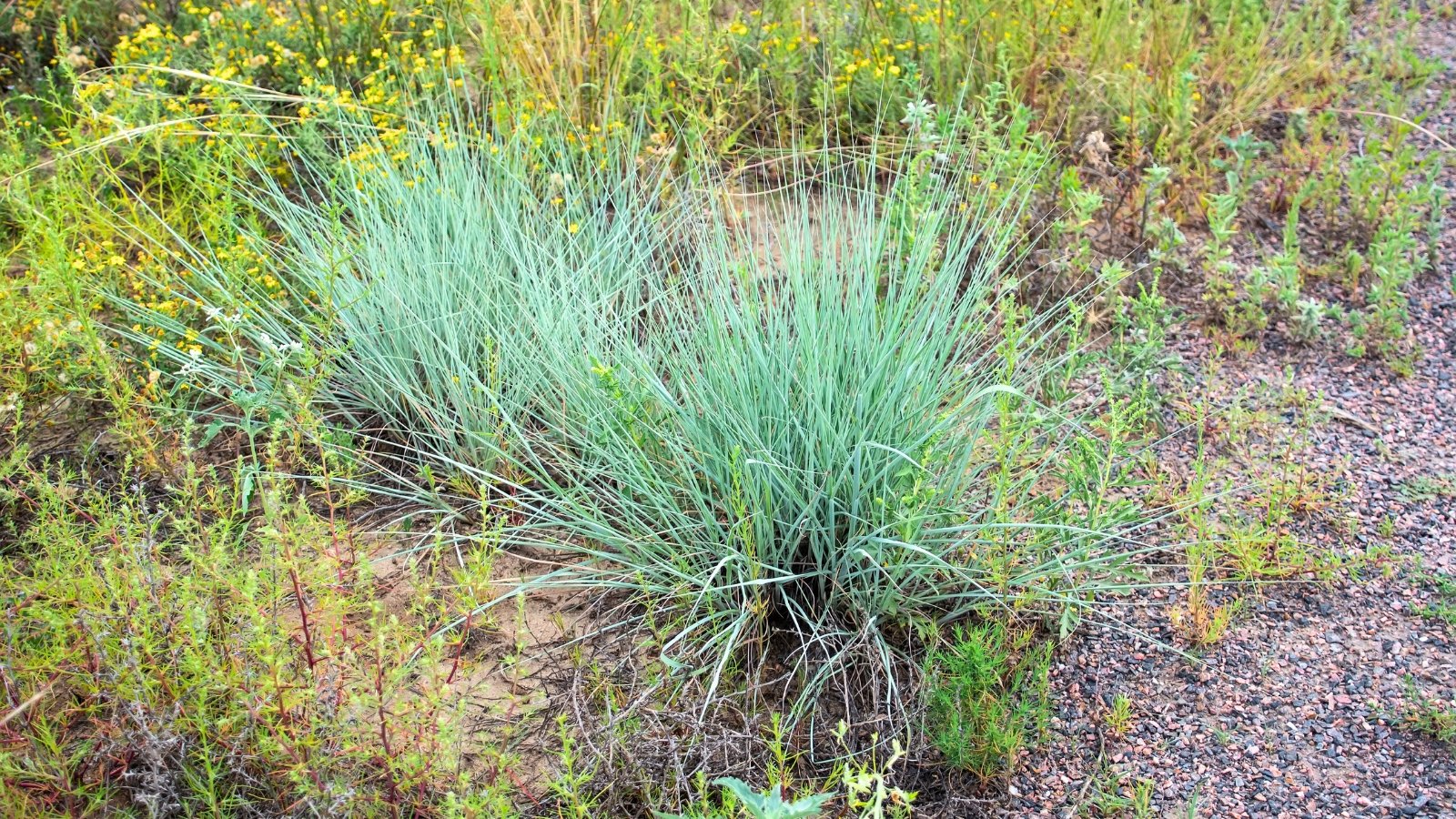 The leaves are excellent nesting material for birds.
The leaves are excellent nesting material for birds. Little bluestem is a wide-ranging North American native that softens the home landscape with tufts of narrow, folded blades. Upright leaves have blue-tinged new growth that matures to golden-red. The amber leaves are striking in a mass against a winter backdrop, even in snow.
Little bluestem produces fluffy white seeds as nutritious forage for birds. The fine leaves are a prime nesting habitat. The adaptable species occurs in lower Canada and most U.S. states (except Washington and Nevada). Clay and sandy soils are its natural habitats, but little bluestem tolerates various types.
‘Blue Heaven®’ is a cultivar with good form and disease resistance. Slender blades begin blue and turn pink and burgundy as they age. Summer panicles are purple with tan seedheads, and coppery fall color continues the appeal.
The perennial warm-season grass does best with a late winter/early spring cut. Clip blades to two to four inches above the soil surface.
Pampas Grass
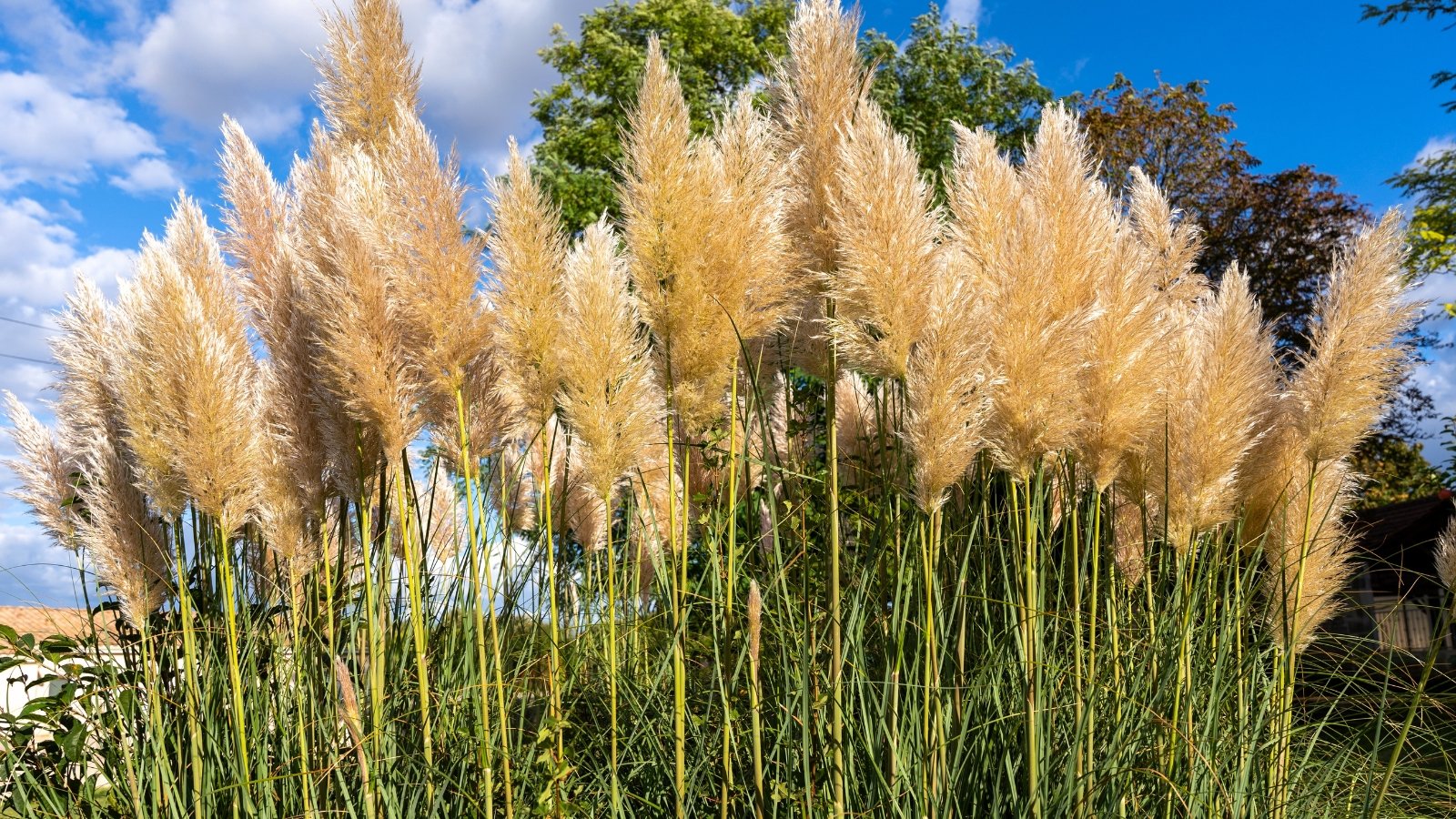 Cut back this aggressive ornamental grass in winter.
Cut back this aggressive ornamental grass in winter. Pampas grass is a popular warm-climate species that tolerates sandy soils, coastal situations, heat, and humidity. With tall, arching blades and massive plumes, it makes a statement. The hefty grass is useful in screening utilitarian elements and is nearly indestructible, where hardy.
Pampas is also difficult to eradicate once established and escapes cultivation into naturalized areas. Fall is a good time to consider removing the species and replacing it with an alternate structural ornamental, like switchgrass.
Pennsylvania Sedge
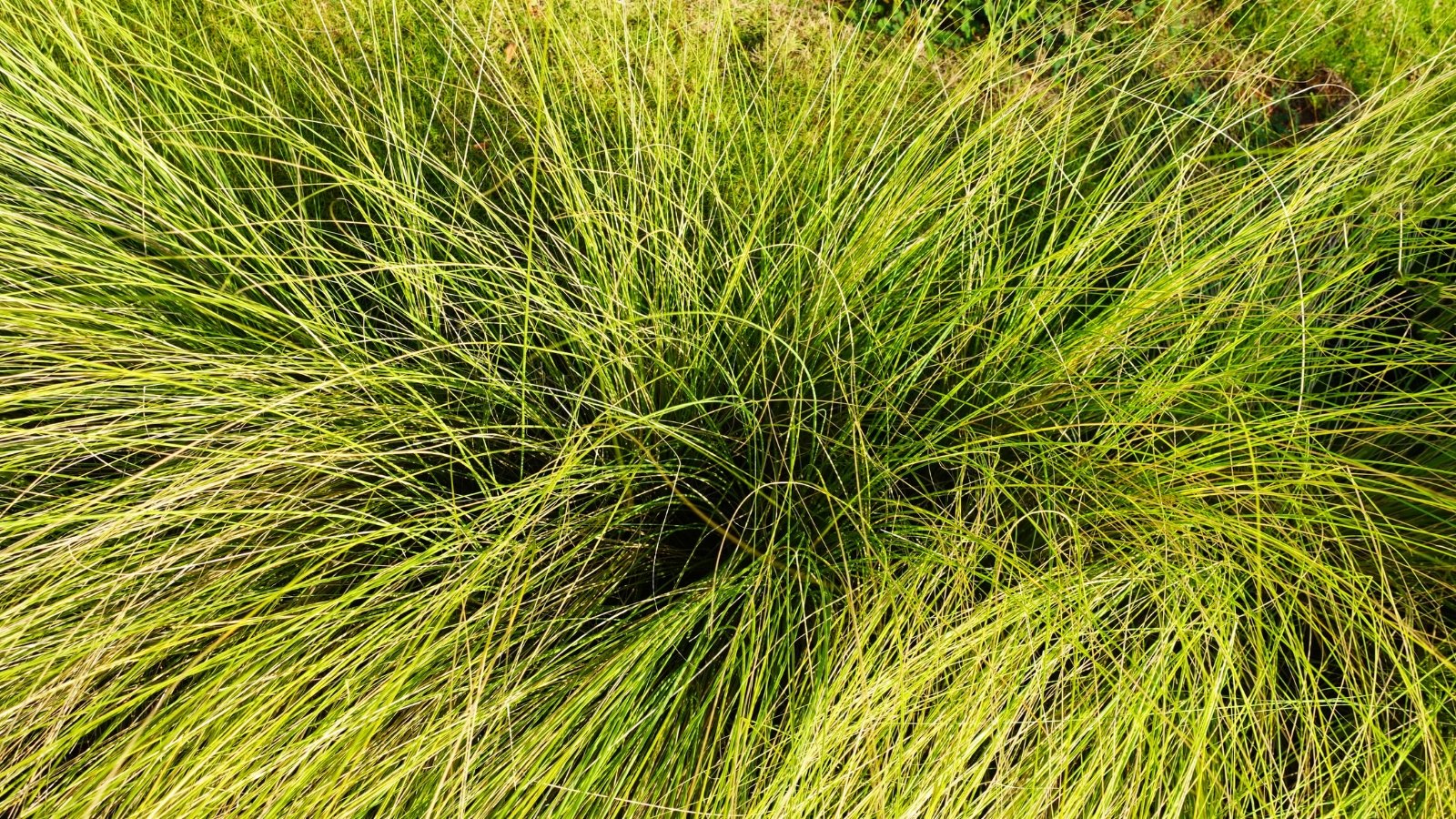 Although they don’t need much trimming, it does keep the clumps tidy.
Although they don’t need much trimming, it does keep the clumps tidy. Pennsylvania sedge is a native North American Carex, and not a true grass, that remains semi-evergreen in moderately cold climates. It forms soft, tufting mounds that colonize gracefully along shady borders and slopes.
The green carpet may not need cutting back after winter, but to tidy up, mow or cut it back in early spring. As a turf alternative or for a short appearance, mow it a few times a year to keep leaves two to three inches tall.
The lush clumps produce reddish-purple inflorescences in late spring. It spreads through rhizomes and may self-seed in optimal conditions. C. pensylvanica occurs naturally in eastern and central North America in dry woodlands. It prefers loose, loamy, and medium to dry soils.
Purple Muhly Grass ‘Pink Cloud’
 Cut back this ornamental grass in late winter.
Cut back this ornamental grass in late winter. Muhly has a spray of deep green, wiry leaves and bursts into a haze of color in late summer and fall. The airy panicles create a pinky-red cloud around the fine-bladed foliage.
‘Pink Cloud’ is a favorite with pink plumes and smooth, dark blades. ‘White Cloud’ brings an open habit with a halo of dense white plumes. ‘Undaunted’ is a cultivar of ruby muhly (M. reverchonii) with deep rose plumes, densely tufted leaves, and improved cold hardiness.
Muhly is heat, humidity, drought, and salt-tolerant. It grows in poor soils, including clay, rocky, and sandy compositions. It does best in warm climates with conditions on the dry side. Aim to clip worn blades in late winter (February to March) to avoid cutting newly emerging leaves.
Blue Fescue ‘Blue Whiskers’
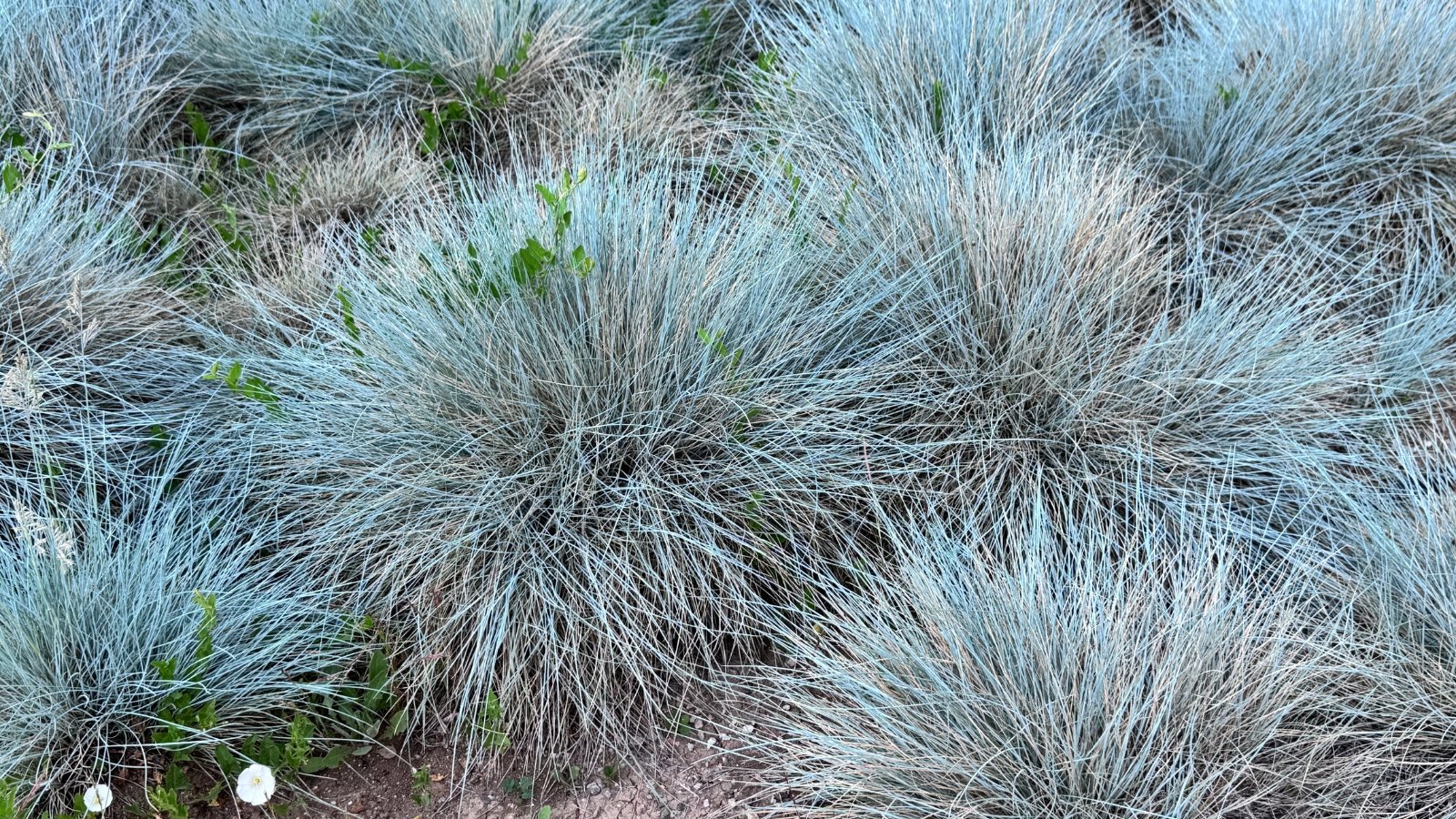 Cutting in late winter promotes new growth in spring.
Cutting in late winter promotes new growth in spring. Blue fescue offers a versatile, compact form and fine, silvery blue blades. This is a vigorous cultivar in bright blue to cool the display. Fine leaves jet from a dense, clumping crown. Airy yellowish plumes rise above the foliage in spring and summer and turn sandy as they age. Birds feed on the seeds.
‘Blue Whiskers’ is adaptable with easy growth, drought, and salt tolerance. It appreciates afternoon shade protection in areas with hot summers, preferring cool conditions. Cut back this ornamental grass after overwintering if the blades are worn for a quick flush in spring.


 3 days ago
6
3 days ago
6
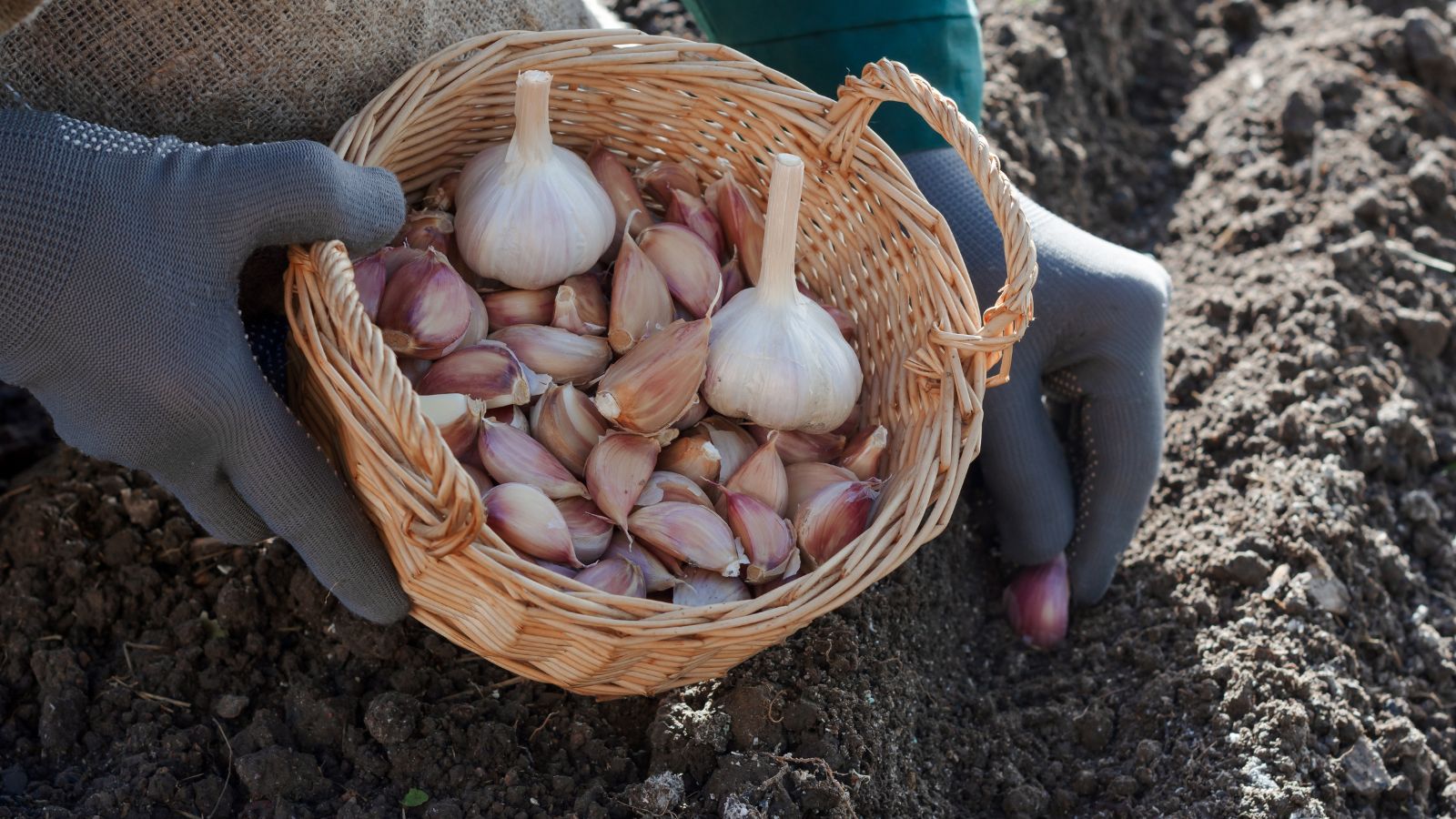
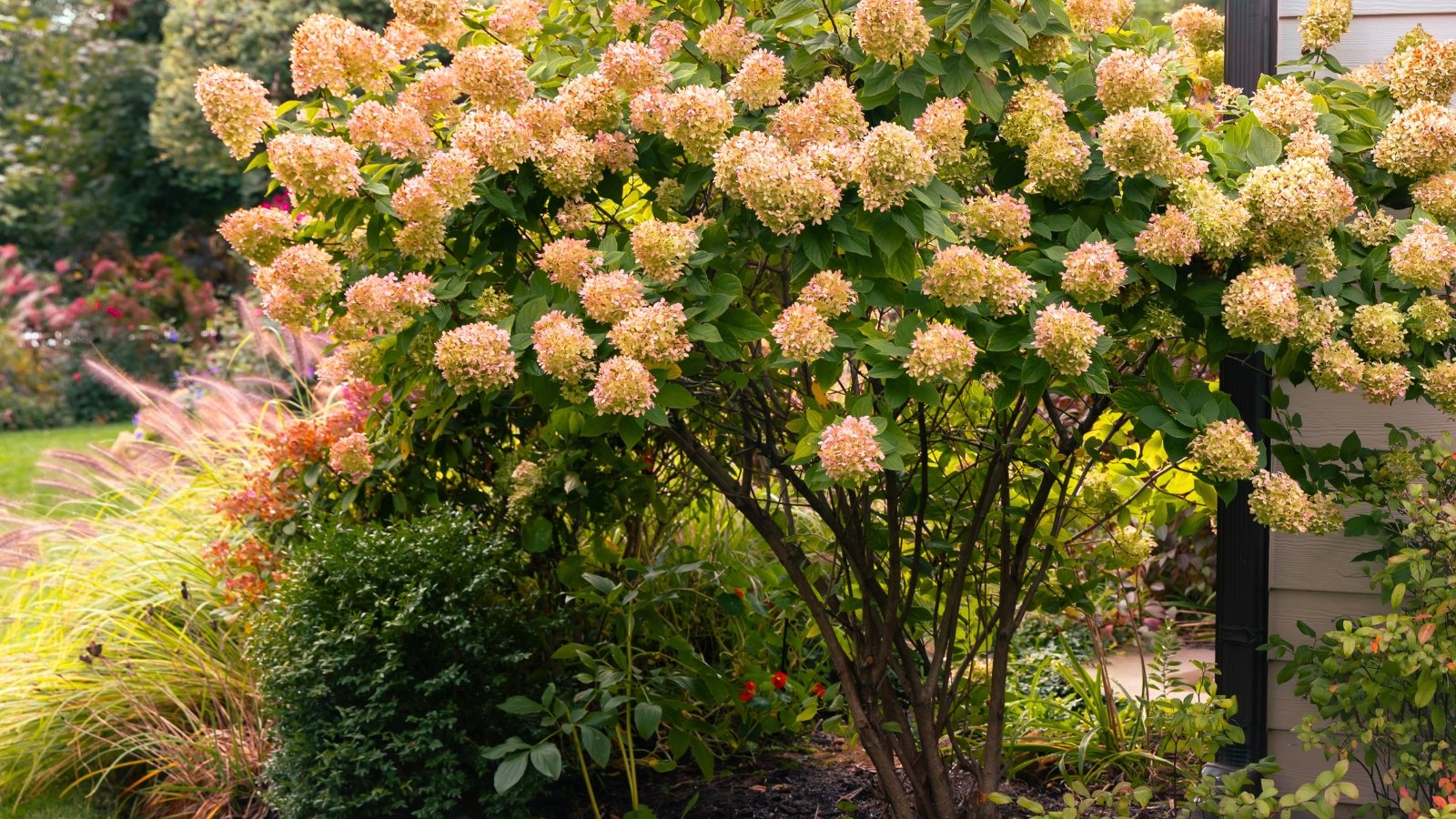

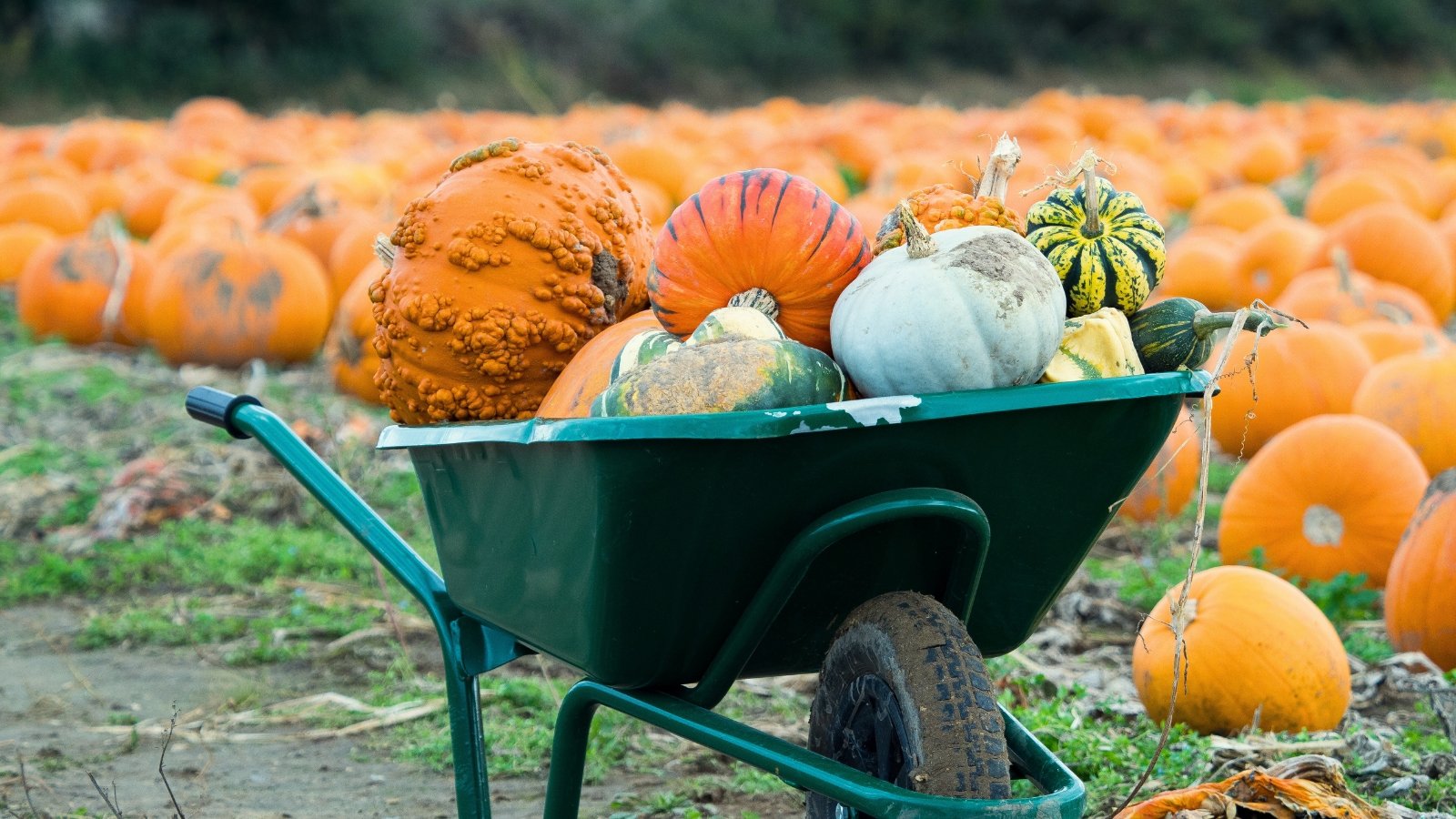

















 English (US) ·
English (US) ·  French (CA) ·
French (CA) ·